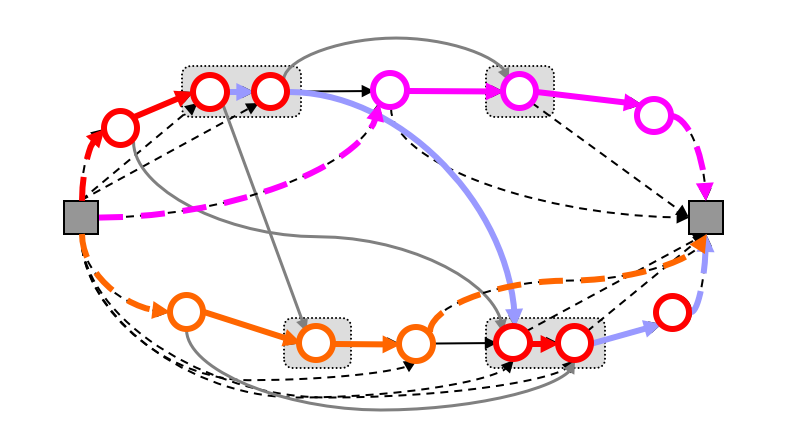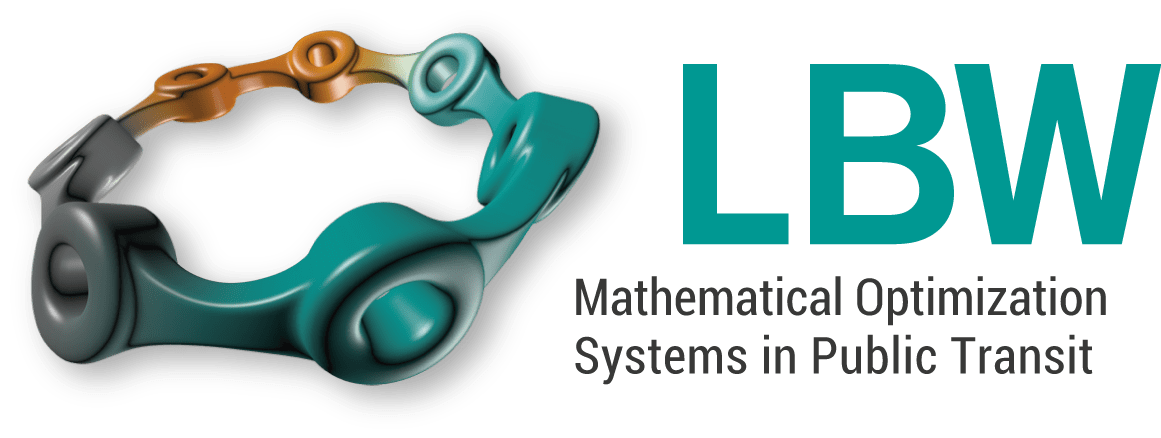Optimization Systems That Set New Standards
DS-OPT
Characteristics
DS-OPT is an optimization tool for duty scheduling problems of public transit companies. Typically, it is used to plan duties for drivers and train guards. For more than 20 years DS-OPT is in use in a multitude of train and bus companies all over the world.
Problem
Duty scheduling involves creating anonymous daily duties for individual drivers from a set of elementary tasks (the so-called service elements), which together form a service plan. Legal, tariff and operational rules for admissibility, monetary and working time assessment of individual services and the plan as a whole, as well as the synchronization with the upstream and downstream steps of the vehicle rotation and roster planning. The planning horizon is typically a day of operation, the main goal is to minimize the costs, secondary objectives are the satisfaction of drivers and operational stability. In the following, we roughly sketch the problem of duty scheduling in public transport. For a more detailed description, please refer to BGL2001 and the references mentioned there.
Duty scheduling is divided into four levels.
Four levels of service planning

Figure 1 – Duty scheduling graph with solution
Mathematical methodology
The mathematical methodology of duty scheduling accurately reflects the four levels.
The basis and first level is a graph theoretical model of the duty scheduling problem.


